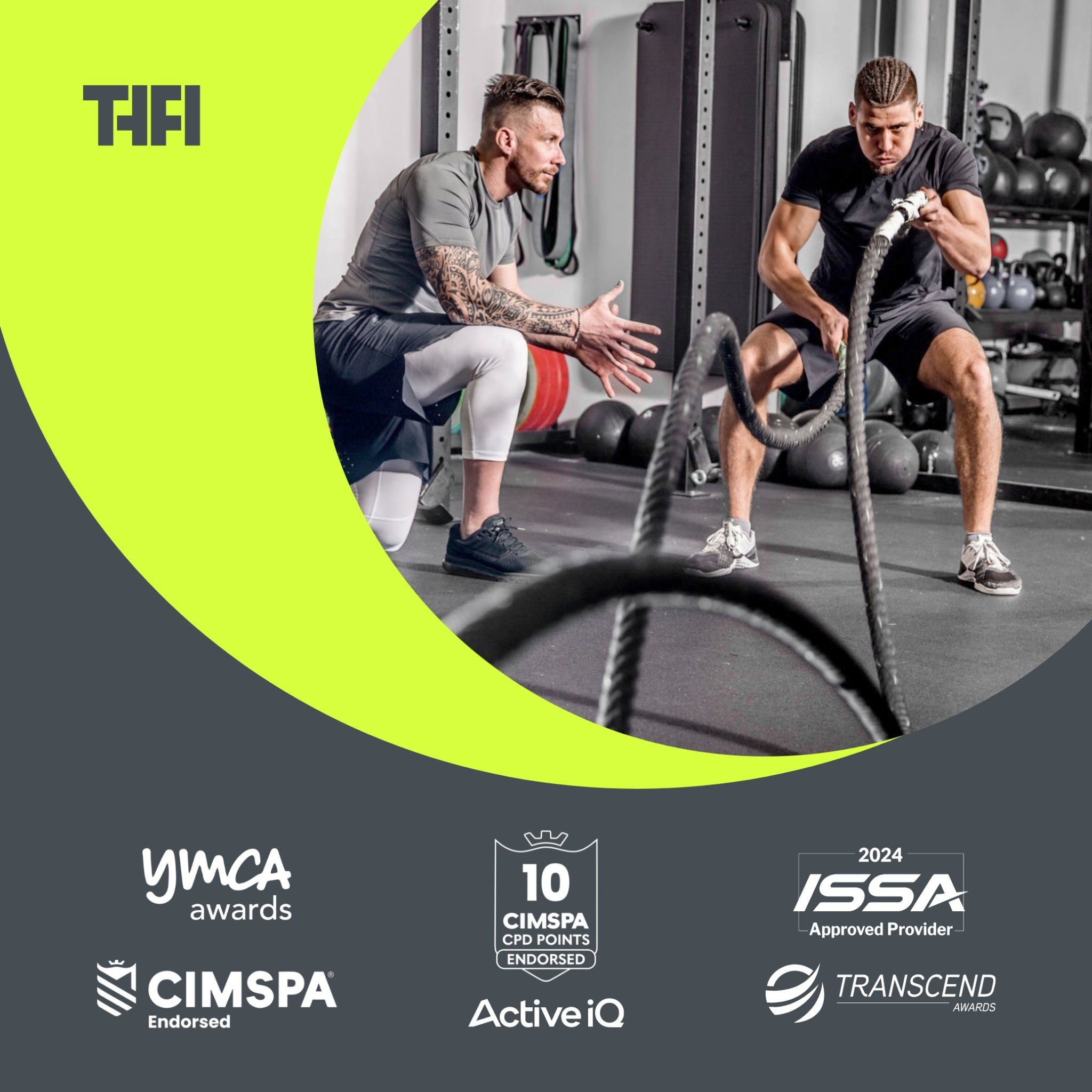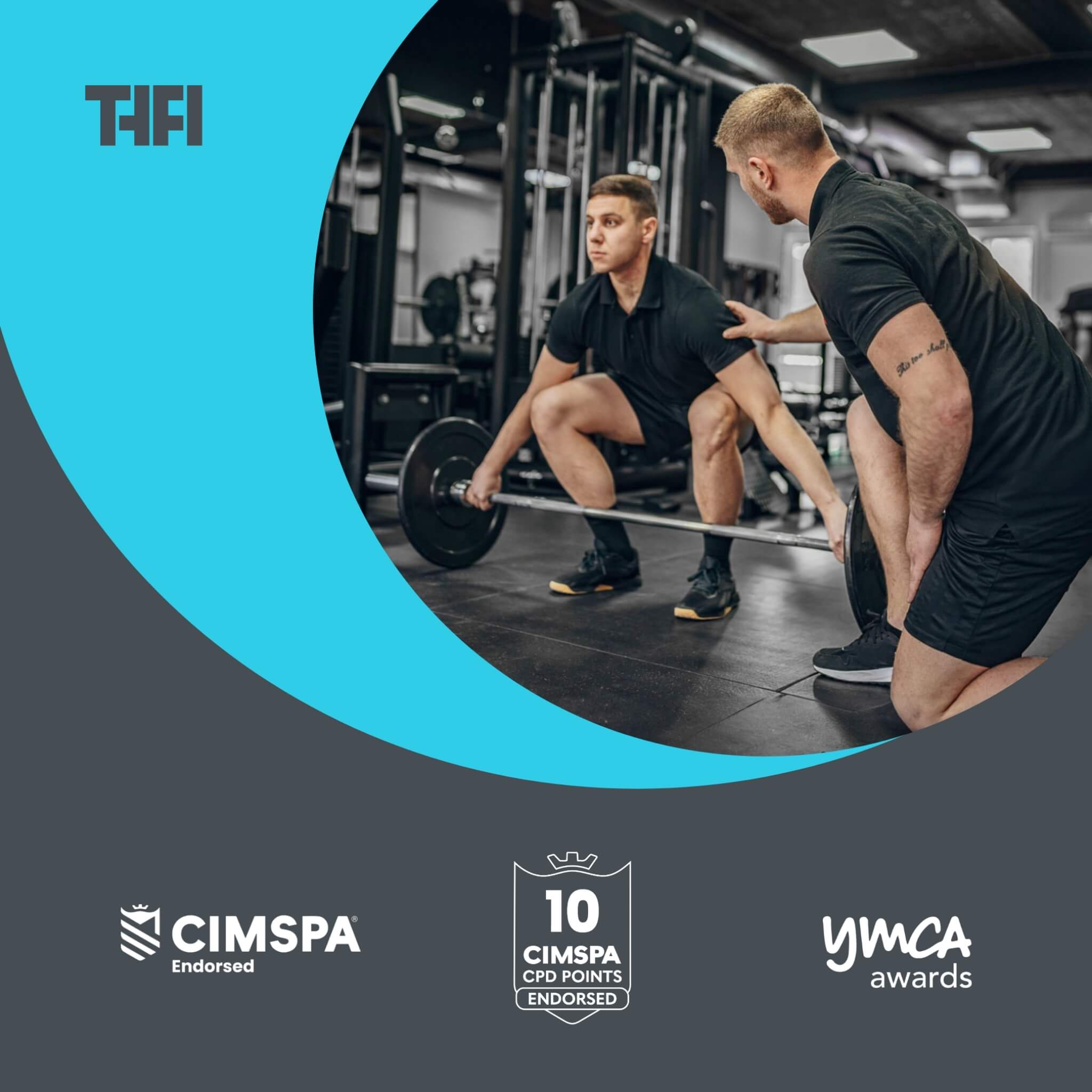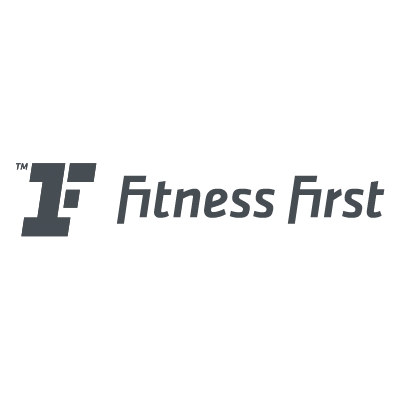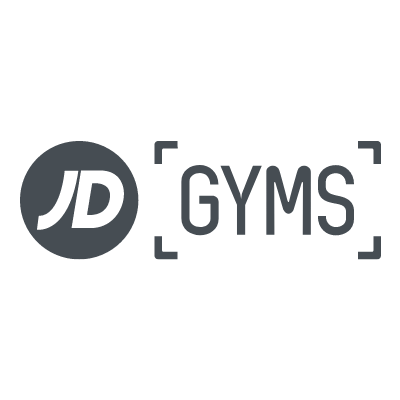Do Bigger Muscles Make You Stronger?

Do bigger muscles equal more strength?
It's a question that many personal trainers grapple with as they design programs to help their clients get stronger in the gym.
Whether you’re working with new mums recovering from childbirth or athletes looking to get the edge over their competition, you need to know the most effective approach for helping them build strength.
The challenges lie in navigating the widespread belief that building larger muscles are the only way to get stronger – a misconception that can lead to training practices focused too heavily on hypertrophy at the expense of other crucial components of strength development.
If you're aiming to deepen your knowledge in this area, online pt courses can help you understand how to balance hypertrophy and strength training effectively for a range of clients.
This article delves into the nuanced relationship between muscle size and strength, shedding light on the physiological and neurological aspects that play pivotal roles in effective strength training.
We'll explore three key areas: the science behind muscle size and strength, debunking the myth with real-world applications, and practical training techniques to maximise strength.
It will enrich your training toolkit and show you how muscle hypertrophy and neural adaptations contribute to strength, and give strategies for balancing low-load and high-load training for optimal outcomes.
You’ll be able to enhance your approach to program design for building strength so you can help your clients get the results they want in the gym...
Jo Green’s Insight:
"A common mistake in the fitness industry is assuming that bigger muscles automatically equal greater strength. While muscle size plays a role, neural adaptations, motor unit recruitment, and training specificity are just as crucial for developing true strength. Understanding this distinction helps trainers design better programs that go beyond just increasing muscle mass."
Key Takeaways: Do Bigger Muscles Make You Stronger?
Does muscle size always correlate with strength?
- Not necessarily—while bigger muscles can generate more force, strength is determined by multiple factors beyond muscle mass.
- Neural adaptations, motor unit recruitment, and movement efficiency play a crucial role in strength development.
- Jo Green: "The biggest mistake trainers make is assuming muscle size equals strength. True strength depends on how well the nervous system activates muscles."
What contributes to strength gains?
1. Muscle Hypertrophy
- Resistance training stimulates muscle fibre growth, leading to increased muscle size.
- Studies show that hypertrophy has a moderate impact on strength, but it's not the only factor.
- Jo Green: "Bigger muscles don’t automatically mean stronger muscles—train for both hypertrophy and neuromuscular efficiency for optimal results."
2. Neural Adaptations
- The nervous system controls muscle activation, coordination, and efficiency.
- Strength gains in the first few weeks of training are due to neuromuscular adaptations, not muscle growth.
- Jo Green: "Strength training isn’t just about building muscle—it’s about training the brain and nervous system to fire muscles more effectively."
3. High-Load vs. Low-Load Training
- High-load training (lifting heavier weights) improves maximal strength and motor unit recruitment.
- Low-load training (lighter weights, higher reps) enhances muscular endurance and hypertrophy.
- Jo Green: "Trainers should use both high-load and low-load training to build strength effectively—they target different mechanisms."
4. Periodisation and Training Variety
- Rotating between strength, hypertrophy, and power phases maximises strength over time.
- Explosive movements, plyometrics, and isometric exercises help improve neuromuscular efficiency.
- Jo Green: "Strength programs that incorporate variety and periodisation lead to better long-term progress."
5. Individualised Strength Programs
- Strength training should be customised based on:
- Client’s goals (sports performance, general strength, injury recovery)
- Training history and current ability
- Lifestyle factors (sleep, nutrition, stress levels)
- Jo Green: "One-size-fits-all training doesn’t work—tailor strength programs to match client needs and biomechanics."
The Science Behind Muscle Size and Strength
Understanding Muscle Hypertrophy
Muscle hypertrophy refers to the increase in muscle size through exercise. At its core, hypertrophy results from resistance training that leads to microscopic damage to muscle fibres, prompting them to repair and grow larger. This process is influenced by various factors, including genetics, training intensity, and nutritional support.
It's crucial to understand that hypertrophy is not the sole contributor to increased strength. While larger muscles can potentially produce more force, the size-strength relationship isn't linear.
Some studies show that while hypertrophy contributes to strength gains, the correlation between muscle cross-sectional area and strength is moderate. And other studies, including a 2019 study by Loenneke et al say the relationship between muscle size and strength is negligible. (1)
This underscores the complexity of strength development and hints at the involvement of other factors beyond muscle size.
Jo Green’s Insight:
"Trainers who focus only on hypertrophy might be limiting their clients' strength potential. The key is to balance hypertrophy-focused training with neural and movement-based strength exercises to maximise real-world performance."
Strength Gains: More Than Just Size
Strength is the ability to exert force. It's a multifaceted trait, influenced by muscle mass, but also significantly by the efficiency of the nervous system in recruiting muscle fibres, motor unit coordination, and the type of muscle fibres being engaged.
Essentially, strength gains can occur without a substantial increase in muscle size through neural adaptations.
Early gains in strength at the beginning of a resistance training program are largely attributed to these neural adaptations. The nervous system becomes more efficient at activating the muscles, meaning you can lift more weight not because your muscles have grown significantly, but because your body has learned to use what it already has more effectively.
This distinction is crucial for personal trainers to grasp. It explains why two individuals with similar muscle mass might display different strength levels. Training programs that focus solely on hypertrophy without considering the neural aspects of strength training might not be optimising their clients' strength potential.
Jo Green’s Insight:
"The nervous system plays a massive role in early strength gains—before any noticeable muscle growth occurs. Strength training should focus on efficiency, motor control, and explosive force development just as much as muscle growth."
Neural Adaptations and Their Role
Neural adaptations refer to the nervous system's ability to improve its control over muscles. This includes enhanced coordination between muscles, increased firing rate of motor units (groups of muscle fibres and the nerve cells that control them), and the ability to recruit larger motor units.
One landmark study in this area, conducted by Moritani and deVries in 1979, demonstrated that significant increases in strength within the first few weeks of resistance training could be attributed to neural adaptations, with little to no hypertrophy occurring during this period. (2)
This early phase of strength gain is critical, especially for beginners, as it sets the foundation for subsequent muscle growth and further strength improvements.
The implications for personal trainers are profound. Emphasising techniques that enhance neural efficiency, such as plyometrics, high-intensity interval training (HIIT), and complex movements that require a high degree of coordination, can be just as important as traditional hypertrophy training.
Jo Green’s Insight:
"Many trainers overlook the importance of neural adaptations and jump straight into hypertrophy-focused programs. But in the first few weeks of training, the biggest strength gains come from improved neuromuscular efficiency, not bigger muscles. Prioritising neural training early on sets clients up for long-term strength success."
Understanding and applying these principles can help trainers develop more effective, holistic training programs that yield faster and more substantial improvements in both strength and muscle size for their clients.
Incorporating a diverse range of training methodologies that address both hypertrophy and neural adaptations can not only accelerate a client's progress but also provide a more engaging and varied training experience.
This approach can be a key differentiator for personal trainers looking to advance their careers, improve client results, and ultimately, enhance their earning potential.
By educating clients on the multifaceted nature of strength development and demonstrating tangible progress through strategic program design, trainers can build trust, foster long-term client relationships, and establish themselves as experts in the field.
This knowledge empowers trainers to debunk common myths surrounding muscle size and strength, guiding their clients towards more effective training practices and better overall results.
Practical Implications for Training Regimens
Understanding that bigger muscles do not always mean more strength has profound implications for designing training programs. Personal trainers can leverage this knowledge to optimise their clients' training outcomes by focusing on:
Specificity of Training: Tailor training programs to the specific strength goals of the client, incorporating exercises that target the neural aspects of strength development as well as muscle hypertrophy.
Neural Training Techniques: Integrate exercises that enhance neural adaptations, such as explosive lifts, plyometrics, and complex movements that require coordination and motor control.
Periodisation: Employ a periodised training approach that cycles through phases of hypertrophy, strength, and power training to continually challenge the neuromuscular system and promote overall strength development.
Holistic Approach: Combine resistance training with other forms of exercise and recovery strategies to support overall health and fitness, recognising that factors such as diet, sleep, and stress management play crucial roles in achieving strength gains.
By adopting a comprehensive approach that values the complexity of strength over the simplicity of muscle size, personal trainers can foster more meaningful improvements in their clients' performance.
This not only helps in achieving their immediate fitness goals but also in cultivating a sustainable, long-term relationship with exercise and physical activity.
Ultimately, the myth that bigger muscles automatically confer greater strength is a simplification that doesn't hold up under scrutiny. The real-world applications of this knowledge allow for more sophisticated and effective training methods that can lead to better results for clients, distinguishing informed trainers from the rest.
It's an exciting time to be in the fitness industry, as evolving research continues to inform and refine our training practices, promising better outcomes for trainers and clients alike.
Jo Green’s Insight:
"Strength isn’t just about lifting heavier—it’s about lifting smarter. Trainers who educate their clients about strength’s multiple components (neuromuscular control, movement efficiency, and force production) can deliver faster, more sustainable progress."
Training Techniques for Maximised Strength
Low-Load vs. High-Load Training
The debate between low-load (using lighter weights for more repetitions) and high-load (using heavier weights for fewer repetitions) training has been a topic of discussion among fitness professionals for years.
Both methods have their place in a well-rounded strength training program, but understanding their differences and applications is key to maximising strength.
High-load training is traditionally associated with greater strength gains due to its emphasis on lifting heavier weights, which challenges the muscles and neuromuscular system to adapt to higher stress levels.
This form of training is particularly effective in increasing muscle fibre recruitment, especially the fast-twitch fibres that are most responsive to growth and strength improvements.
On the other hand, low-load training has been shown to also contribute significantly to muscle hypertrophy and strength, albeit through slightly different mechanisms. It promotes muscular endurance and can stimulate muscle growth through metabolic stress and time under tension.
A 2015 study published in the "Journal of Strength and Conditioning Research" found that low-load training to failure can induce muscle hypertrophy comparable to high-load training, provided the muscles are worked to the point of failure. (3)
The choice between low-load and high-load training should be based on the individual's goals, fitness level, and preferences. Incorporating both methods into a training program can provide a comprehensive stimulus to the muscles, ensuring both strength and hypertrophy gains.
Jo Green’s Insight:
"A lot of trainers make the mistake of assuming high-load training is the only way to build strength. But low-load training to failure can be just as effective for hypertrophy. The best results come from combining both strategically based on the client’s goals."
Tailoring Programs to Individual Needs
One size does not fit all when it comes to strength training. Each individual comes with unique goals, abilities, and limitations. Tailoring training programs to meet these individual needs is crucial for maximising strength gains and ensuring long-term success.
Assessment and Goal Setting: Begin with a thorough assessment of the client's current fitness level, including strength, flexibility, and overall health. Discuss their goals and expectations to align the training program accordingly.
Customised Training Plan: Develop a customised training plan that considers the client's goals, available time, and resources. This might include a mix of low-load and high-load training, along with other techniques like plyometrics or isometric exercises, depending on the client's objectives.
Progressive Overload: Implement progressive overload by gradually increasing the intensity, volume, or frequency of the workouts. This ensures continuous improvement and helps avoid plateaus.
Recovery and Adaptation: Emphasise the importance of recovery, including rest days and proper nutrition, to allow for muscle repair and growth. Adapt the program as the client progresses and as their needs change.
By focusing on the individual and applying a diverse range of training techniques, personal trainers can optimise their clients' strength gains. This personalized approach not only yields better results but also increases client satisfaction and retention, further advancing the trainer's career and reputation in the industry.
Jo Green’s Insight:
"The best trainers don’t just follow a generic plan—they adapt workouts to the individual. Factoring in client goals, biomechanics, and lifestyle makes strength training more effective and sustainable."
In conclusion, understanding and applying the principles of low-load versus high-load training, along with tailoring programs to individual needs, are fundamental for personal trainers aiming to maximise their clients' strength. This knowledge enables trainers to design more effective, evidence-based training regimens, setting their clients on the path to achieving their strength and fitness goals.
Conclusion
While muscle hypertrophy contributes to strength gains, it is not the sole determinant. Strength is also significantly influenced by neural adaptations, the efficiency of muscle fibre recruitment, and the specificity of training regimens.
This understanding underscores the importance of adopting a holistic approach to training—one that goes beyond the pursuit of muscle mass. Effective strength training programs should balance high-load and low-load exercises to stimulate both muscle growth and neural adaptations. Additionally, these programs must be tailored to the individual needs and goals of each client, ensuring that training is both personalised and purposeful.
Moreover, the significance of physiological responses cannot be overstated. A trainer's arsenal should include not only diverse training methodologies but also a deep knowledge of nutrition, recovery strategies, and how they contribute to strength development.
Adequate rest, proper nutrition, and stress management are pivotal in supporting the body's recovery process, leading to more effective training sessions and, ultimately, greater strength gains.
In light of these insights, personal trainers are called upon to integrate this comprehensive understanding into their practice. By doing so, trainers can design more sophisticated, evidence-based training programs that yield not just better results but also a more satisfying and empowering experience for their clients.
This approach not only enhances the trainer-client relationship but also positions trainers as leaders in the field, capable of delivering substantial, science-backed improvements in physical fitness.
Jo Green’s Insight:
"Trainers who embrace a holistic, science-backed approach to strength training stand out in the industry. By going beyond muscle size and focusing on movement, neural efficiency, and recovery, they deliver better results and build long-term client trust."
Are bigger muscles stronger?
- Not always—muscle size contributes to strength, but neuromuscular efficiency, coordination, and motor unit activation are equally important.
- Jo Green: "Size helps, but strength depends on how well you can use that muscle effectively."
What’s more important for strength—muscle size or neural efficiency?
- Both are important, but early strength gains come mostly from neural adaptations.
- Long-term strength development requires a mix of hypertrophy and neuromuscular training.
Can you get stronger without getting bigger?
- Yes—strength gains can occur through neural adaptations, motor unit recruitment, and improved coordination.
- Olympic lifters and gymnasts are great examples of high strength without excessive muscle mass.
Is lifting heavier weights always better for strength?
- Not necessarily—progressive overload matters more than just lifting heavier.
- Low-load, high-rep training to failure can still induce strength and hypertrophy gains.
What’s the best way to train for both muscle size and strength?
- Combine high-load training for strength with low-load hypertrophy work.
- Implement progressive overload, periodisation, and neural training techniques.
- Jo Green: "To maximise strength and size, train smart, not just heavy."
References:
1. Loenneke, J.P., Buckner, S.L., Dankel, S.J., and Takashi, A., (2018) “Exercise-Induced Changes in Muscle Size do not Contribute to Exercise-Induced Changes in Muscle Strength.” Sports Medicine, Volume 49, pages 987–991
2. Moritani, T., & DeVries, H. A. (1979). Neural factors versus hypertrophy in the time course of muscle strength gain. American Journal of Physical Medicine, 58(3), 115-130.
3. Schoenfeld, B.J., et al. (2015). Effects of Low- vs. High-Load Resistance Training on Muscle Strength and Hypertrophy in Well-Trained Men. Journal of Strength and Conditioning Research, 29 (10) 2954-2963


























